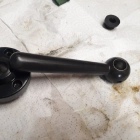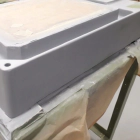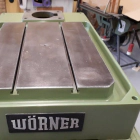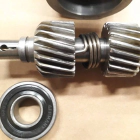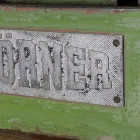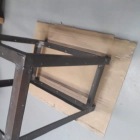Some of the parts of the Wörner B13 were originally blackened. Rust have ruined most of those finishings. Thus I was faced to polish them to clear metal or try to recover original black coating. I found interesting to experiment with those cold blackening solutions and give them a try. What follows is the resulting experience.
The parts to be processed were:
The screw plug of the quill retention. The handle and bearing support of the belt tensioning pinion.
